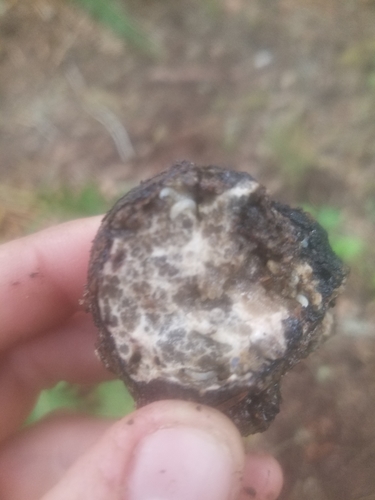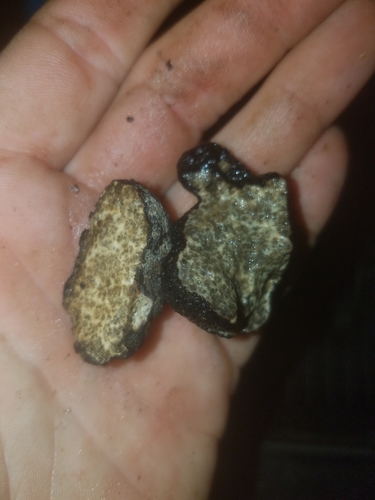Add your promotional text...
Leucangium Carthusianum
Oregon Black Truffle

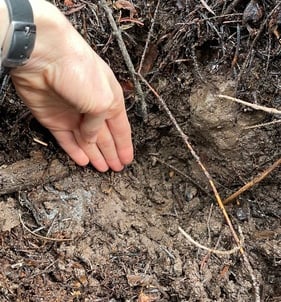

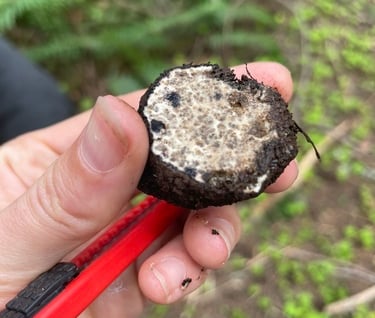
Hilary Rose Dawson

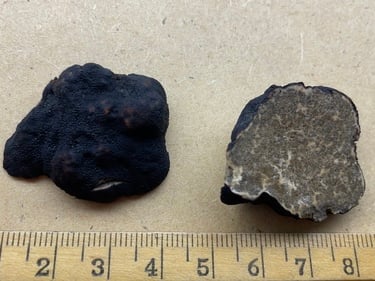
Spore Print: Dark brown to black
Habitat: Mycorrhizal with Douglas fir in the Pacific Northwest (Oregon, Washington, British Columbia)
Season: Winter to spring (Dec – May)
Basics
Fruiting Body: Subterranean, rounded to irregular, typically 2–7 cm across. Peridium (outer surface) dark brown to nearly black, smooth to finely warty.
Interior (Gleba): Whitish when immature, maturing to a marbled pattern of white veins against a dark olive-brown to black spore mass.
Odor: Distinct, strong, and musky when ripe — considered highly aromatic and prized for culinary use.
Texture: Firm with a dense rind when young; softens slightly at maturity.
Spore Print: Dark brown to black
Habitat: Forms ectomycorrhizal associations with Douglas fir; prefers moist, well-drained soils
Growth Pattern: Subterranean; often scattered or in clusters; located by trained truffle dogs or careful harvest methods
Seasonality: Peak fruiting from mid-winter through spring (Dec – May)
Edibility: Highly regarded edible truffle, marketed as the “Oregon Black Truffle.”
Used in fine dining, grated or shaved over dishes for strong aroma and earthy flavor.
As with other truffles, must be consumed fresh for best flavor, as aroma fades with storage.
Description
Info
Basics
